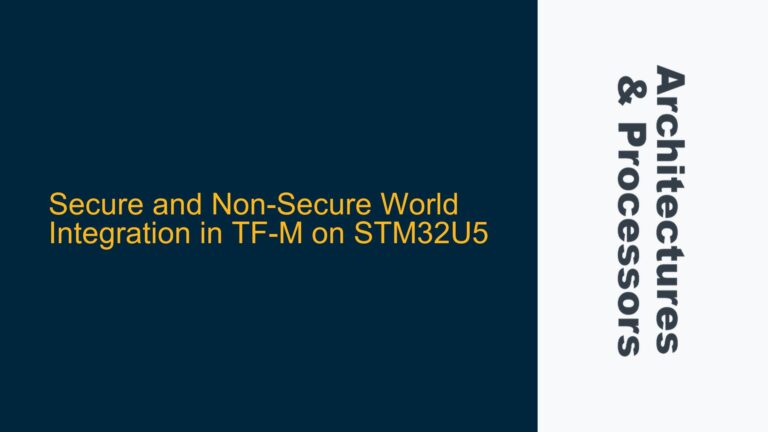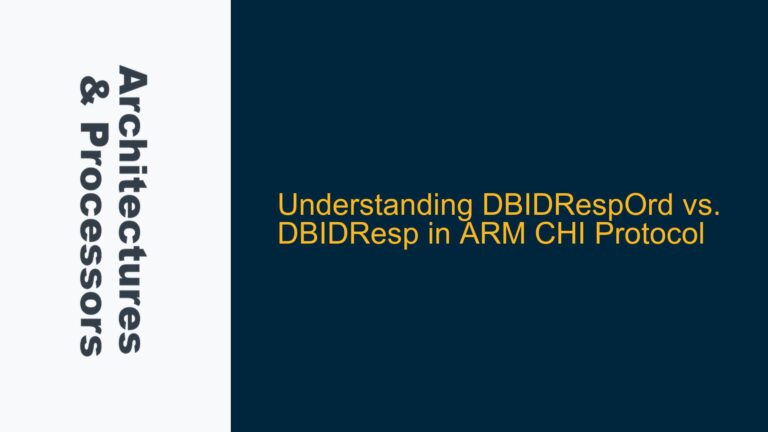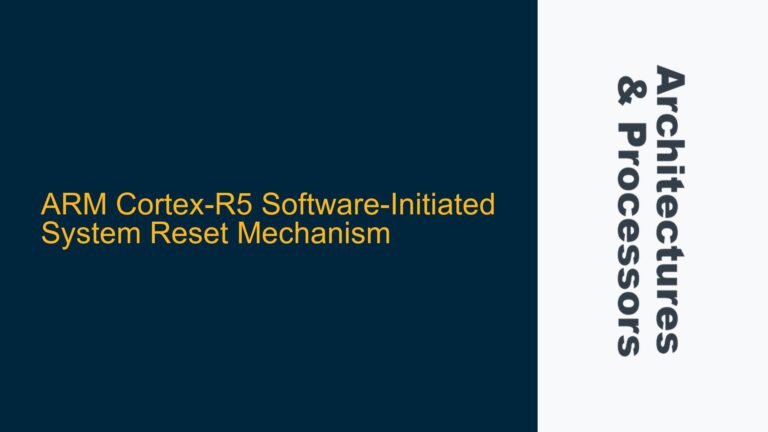Exclusive Access Mechanisms in AXI3 and AXI4: A Comparative Analysis
Exclusive access is a critical feature in ARM’s AXI (Advanced eXtensible Interface) protocol, designed to support atomic operations in multi-master systems. It allows a master to perform a read-modify-write sequence without interference from other masters, ensuring data integrity. In AXI3, exclusive access is defined as a two-part process: an exclusive read followed by an exclusive write. The exclusive read operation marks a memory region as "monitored," and the exclusive write operation succeeds only if no other master has modified the monitored region in the interim. AXI4 retains this fundamental mechanism but introduces subtle changes to improve scalability and performance.
One of the key differences between AXI3 and AXI4 lies in the maximum burst length supported for exclusive transfers. In AXI3, the burst length for exclusive transfers is limited to 16 beats, consistent with its overall burst length limitations. AXI4, however, extends the maximum burst length for non-exclusive INCR (incrementing) bursts beyond 16 beats, but explicitly caps exclusive transfers at 16 beats. This change ensures that exclusive transfers remain efficient and predictable, avoiding potential latency issues that could arise from longer bursts.
Another significant difference is the removal of LOCKed transfers in AXI4. In AXI3, LOCKed transfers were used to enforce atomicity by preventing other masters from accessing a shared resource during a locked sequence. While effective, this approach had a major drawback: it could severely impact the latency of other masters, particularly in systems with high-priority tasks. AXI4 addresses this limitation by deprecating LOCKed transfers and relying exclusively on exclusive access for atomic operations. This design choice reflects a broader trend in ARM architectures toward minimizing contention and improving system responsiveness.
Impact of LOCKed Transfer Removal on AXI4 System Design
The removal of LOCKed transfers in AXI4 has profound implications for system design, particularly in multi-master environments. LOCKed transfers in AXI3 provided a straightforward mechanism for enforcing atomicity but at the cost of increased latency for other masters. When a master initiated a LOCKed sequence, it effectively monopolized the shared resource, preventing other masters from accessing it until the sequence completed. This behavior could lead to significant performance degradation, especially in systems with real-time requirements or high-priority tasks.
In contrast, AXI4’s exclusive access mechanism allows other masters to access the shared resource during an exclusive sequence, provided they do not modify the monitored region. This approach reduces contention and improves overall system performance. However, it also places additional responsibility on the system designer to ensure that exclusive sequences are used correctly and efficiently. For example, designers must carefully manage the size and duration of exclusive transfers to avoid unnecessary monitoring overhead.
The transition from LOCKed transfers to exclusive access in AXI4 also reflects a shift in ARM’s design philosophy. By prioritizing scalability and performance over simplicity, AXI4 encourages developers to adopt more sophisticated synchronization techniques. This change aligns with the growing complexity of modern embedded systems, where efficient resource sharing is critical to achieving optimal performance.
Implementing Exclusive Access in AXI4: Best Practices and Troubleshooting
Implementing exclusive access in AXI4 requires a thorough understanding of the protocol’s requirements and constraints. The following best practices can help ensure reliable and efficient operation:
-
Monitor Region Size: The size of the monitored region should be carefully chosen to balance performance and overhead. Larger regions reduce the number of exclusive transfers required but increase the risk of false failures due to unrelated modifications. Smaller regions minimize this risk but may result in higher monitoring overhead.
-
Burst Length Management: As mentioned earlier, AXI4 limits exclusive transfers to a maximum burst length of 16 beats. Designers should ensure that their implementations adhere to this constraint to avoid protocol violations. Additionally, burst lengths should be optimized to minimize latency and maximize throughput.
-
Error Handling: Exclusive access sequences can fail if the monitored region is modified by another master. Systems must include robust error handling mechanisms to detect and respond to such failures. This may involve retrying the sequence, notifying higher-level software, or taking other corrective actions.
-
Performance Monitoring: Designers should monitor the performance of exclusive access sequences to identify potential bottlenecks or inefficiencies. This may involve profiling the system under various workloads and adjusting parameters such as burst length and monitor region size.
-
Compatibility Considerations: While AXI4 deprecates LOCKed transfers, some legacy systems may still rely on them. Designers working on mixed AXI3/AXI4 systems must ensure compatibility by implementing appropriate translation or emulation layers.
By following these best practices, designers can leverage AXI4’s exclusive access mechanism to build high-performance, scalable systems that meet the demands of modern embedded applications. However, achieving this goal requires a deep understanding of the protocol’s intricacies and careful attention to detail during implementation.
In conclusion, the differences between exclusive access in AXI3 and AXI4, along with the removal of LOCKed transfers in AXI4, represent significant advancements in ARM’s AXI protocol. These changes reflect a broader trend toward improving scalability, performance, and efficiency in multi-master systems. By understanding these differences and adopting best practices for implementation, designers can unlock the full potential of AXI4 and build systems that meet the challenges of today’s embedded computing landscape.






